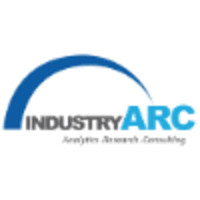Bleeding Disorder Therapeutics Market size is estimated to reach $20.42Bn by 2025 and is poised to grow at a CAGR of 7.65% during the forecast period 2020-2025. A bleeding disorder is a condition that disrupts the process of blood coagulation by preventing blood clots from forming in patients with hemophilic or other bleeding disorders. Most of these bleeding disorders are inherited, but some are caused by liver disease and others. The global market for the Bleeding Disorder Therapeutics is set to grow rapidly owing to the increase in the number of people suffering from liver disease, anemia and other blood coagulation disorders during the forecast period (2020-2025). The North American market is projected to dominate the global market owing to well-developed healthcare institutions, a favorable regulatory scenario, and major players in the countries of the region.
By Type- Segment Analysis
The global Bleeding Disorder Therapeutics market based on the type has Hemophilia A, Hemophilia B, Von Willebrand and others. The hemophilia A, segment is projected to register the highest growth rate in the market. The large number of patients with hemophilia A. drives market growth in this market segment. In addition, the rise in R&D investment for hemophilia product is acting as a major factor for the growth of the segment over the forecast period (2020-2025).
Request for Sample of the Report @ https://www.industryarc.com/pdfdownload.php?id=17438
Report Price: $ 4500 (Single User License)
By Drug Class – Segment Analysis
Based on Drug-Class, the market is classified into Plasma-derived Coagulation Factor Concentrates, Recombinant Coagulation Factor Concentrates, Desmopressin, Antifibrinolytics, Fibrin Sealant and others. The segment of recombinant coagulation factor concentrates is projected to have the highest growth rate on the market. This increase is attributed to increasing R&D activities and the focus of pharmaceutical companies on recombinant products, resulting in the introduction of new products and is set to continue over the forecast period (2020-2025).
By Geography – Segment Analysis
The North American market is set to dominate the global market in terms of revenue over the forecast period. This is owing to the increasing incidence of bleeding disorders such as hemophilia A, hemophilia B and Von Willebrand disease in the area. In the US, many organizations support people with bleeding disorders by providing educational materials, organizing awareness-raising campaigns, and raising research resources. In addition, the growth of strategic expansion activities through mergers and agreements is projected to further support the growth of the target market in this region over the forecast period. The Asia-Pacific market is set to see faster growth as government spending on the health sector increases, health regulations are developed, and emerging economies in the region have prominent players.
Drivers – Bleeding Disorder Therapeutics Market
Demand for better Healthcare
The growing demand for better quality healthcare facilities in developing countries for the growing urban population is the main driver behind the growth of the global market. The increasing incidence of hemophilia A and B disorders worldwide is a major factor that is set to lead the growth of the therapeutic market for global bleeding disorder. In addition, the increase in the number of patients with von Willebrand’s disease in developed and developing countries, as well as the availability of advanced health care facilities to help adopt the various treatments, are projected to support market growth.
Talk to one of our sales representative about the full report by providing your details in the link below:
https://www.industryarc.com/support.php?id=17438
Challenges – Bleeding Disorder Therapeutics Market
High cost
The main challenge of this market is the cost of acquiring the Bleeding Disorder Therapeutics treatment that is poised to affect the expansion of the market. This is set to hinder market growth over the forecast period (2020-2025). In addition, the unfavorable reimbursement scenario is another factor that is set to further limit the growth of the bleeding disorder therapeutics market over the forecast period.
Bleeding Disorder Therapeutics Market Industry outlook
Product launches, mergers and acquisitions, joint ventures, and geographical expansions are key strategies adopted by players in the Bleeding Disorder Therapeutics Market. Key companies of this market include Novo Nordisk, Bayer AG, Baxter International Inc., Alnylam Pharmaceuticals, Inc., Pfizer, Inc., Xenetic Biosciences, Inc., Bristol-Myers Squibb Company, Sanofi, Amgen, Inc., Janssen Global Services, and Bioverativ, Inc.
Acquisitions/Product Launches
In May 2019, Bayer announces 5-year partnership with the World Federation of Hemophilia Humanitarian Aid Program.
In October 2019, bluebird bio and Novo Nordisk enter into research agreement to develop in vivo genome editing candidates for hemophilia and other severe genetic diseases.
Key Takeaways
Geographically, North America is poised to see extraordinary development owing to well-developed healthcare infrastructure and the presence of major players operating in this region is set to continue its growth during the forecast period (2020-2025).
Rising demand for better healthcare facilities and increasing investments in research and developments by private and government organizations are factors driving the market.
High infrastructure costs, tight regulatory framework are some of the key factors anticipated to inhibit the growth of the global market.
Detailed analysis on the Strength, Weakness and Opportunities of the prominent players operating in the market will be provided in the Bleeding Disorder Therapeutics Market report.
Related Reports :
A. Blood Collection Tubes Market
https://www.industryarc.com/Report/15705/blood-collection-tubes-market.html
B. Functional Medicine Lab Testing Market
https://www.industryarc.com/Report/18330/functional-medicine-lab-testing-market.html

